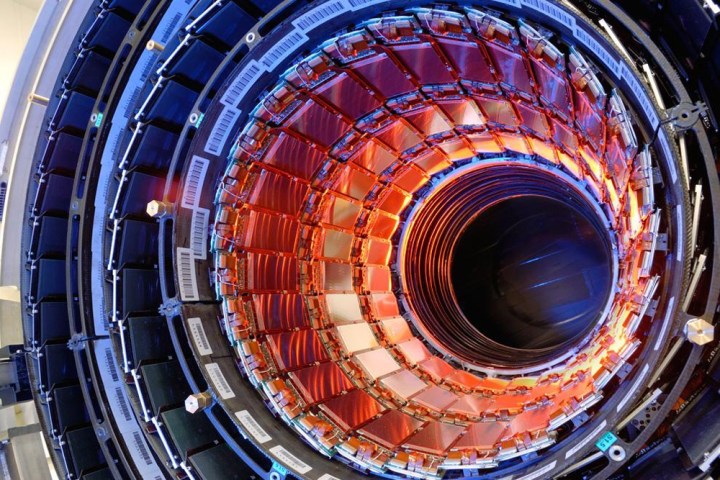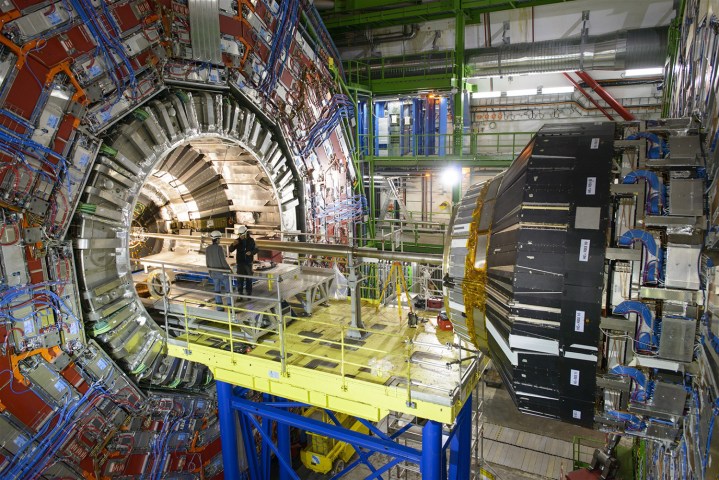
It’s no secret that technology and the people who build it have made some pretty impressive advances over the years, but while there are plenty of smaller, incremental advances that change our lives in some minor way, there are a handful of giant mega projects which have helped transform the world around us.
Whether it’s rocketing us into space, bringing us all together, building astounding edifices, or answering fundamental questions about who we are and where we come from, here are our picks for nine of the most ambitious tech projects in history.
European X-ray Free Electron Laser
The most recent completed project on this list, the European XFEL — a.k.a. the world’s most powerful image-producing X-ray laser — officially opened for business in Germany in September. A giant laser located 125 feet below ground, in a 3.4-kilometer tunnel beneath the northern city of Hamburg, the XFEL is capable of recording images of biochemical reactions as they happen.
“This way we hope to get a new understanding of the fundamental steps of emerging chemical reactivity,” Professor Christian Bressler, one of the scientists involved in the project, told Digital Trends. Plus, who wouldn’t love a massive underground laser?
Three Gorges Dam

The world’s largest hydroelectric dam, China’s Three Gorges Dam cost a whopping $37 billion to build, and generates 11 times the power of America’s Hoover Dam. Stretching 410 miles on the Yangtze River in China’s Hubei Province, the dam opened in 2003 after a decade-long construction process. Last year, it generated a massive 93.500 TWh, slightly less than its 2012 record of 98.100 TWh.
However, while certainly an astonishing example of large scale engineering, the Three Gorges Dam has also been controversial — not least because building it displaced well over 1 million local residents.
Apollo space program

Every item on this list is an example of the power of technology in action. However, nothing screams “we’re living in the future” quite like the results of the 1960s’ Apollo space program, whose crowning achievement was placing man on the Moon on July 20, 1969. In all, six Apollo missions landed on the Moon between 1969 and 1972. (Apollo 13 was supposed to, but failed on account of a spacecraft malfunction.)
A towering achievement for humanity, the Apollo missions are the precursor for the continuing space exploration in the years since, and remain a source of inspiration to millions.
International Space Station

Picking just two space-related mega projects for this list wasn’t easy. But there was no possible other choice for a second entry than the International Space Station (ISS). Launched in 1998, and built by 14 different countries working together, the ISS represented a new age in collaborative space research following the end of the Cold War.
Costing an eye watering $150 billion, it is the largest human-built creation ever launched into space, and is even visible from Earth with the naked eye. A staggering achievement.
DARPA’s CALO project

Sponsored by the U.S. Defense Advanced Research Projects Agency (DARPA), CALO was a five-year, 500-person project which ran between 2003 and 2008. The project name was short for Cognitive Assistant that Learns and Organizes. Its goal was to bring together various different aspects of artificial intelligence including machine learning, knowledge representation and natural language processing to build AI tools for the military.
One notable technology which resulted from the project? The arrival of smart A.I. assistant Siri, which Apple debuted back in 2011. If you’ve ever wondered where we got A.I. technology that allows you to speak to a computer and get an informative answer back, it’s DARPA you need to thank.
Human Genome Project

Running from 1990 until 2003, the Human Genome Project (HGP) was an international scientific research project which set out to sequence and map human DNA; allowing us to read nature’s blueprint for forming a human being. Thanks in part to the Human Genome Project, today anyone can have their genetic makeup sequenced for just a few thousand dollars — opening up a plethora of possibilities for things like proactive medicine that’s tailored to the individual.
Large Hadron Collider
Located 300 feet underground on the border of Switzerland and France, the Large Hadron Collider (LHC) is the world’s largest and most powerful particle accelerator. Costing $9 billion to build, and first switched on back in 2009, the LHC is a 27-kilometer ring of superconducting magnets designed to help unwrap the secrets behind… well, pretty much everything to do with high energy physics.
To achieve this, it smashes almost inconceivably tiny particles into one another at incredibly high speeds in an attempt to simulate conditions found in our universe at the time of the Big Bang. So a bit like monster trucks for physicists, then.
Manhattan Project

No other project on this list — including the Moon landings and the creation of the internet — has shaped the world to quite the extent of the Manhattan Project. A giant R&D project led by the United States between 1942 and 1946, the Manhattan Project drew on pioneering work involving nuclear physics and chemistry to build the world’s first atomic bombs.
The resulting weapon helped end World War II, cost hundreds of thousands of lives, and forever changed the course of international politics and warfare.




